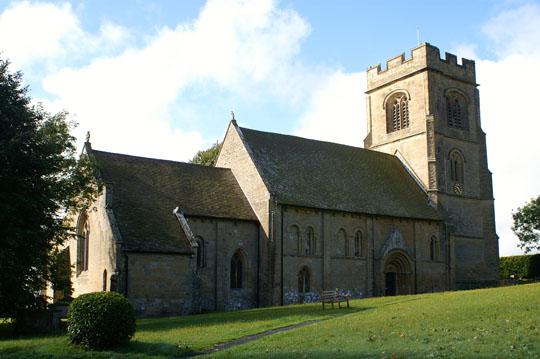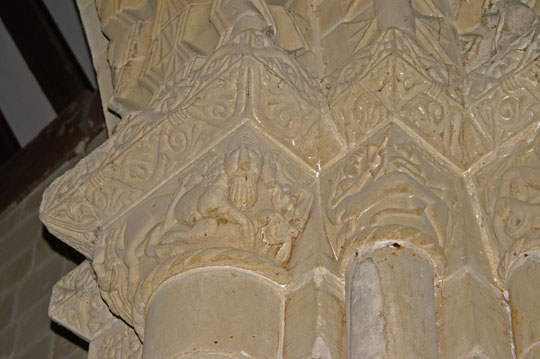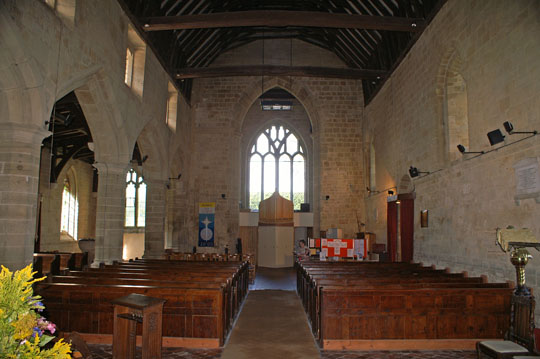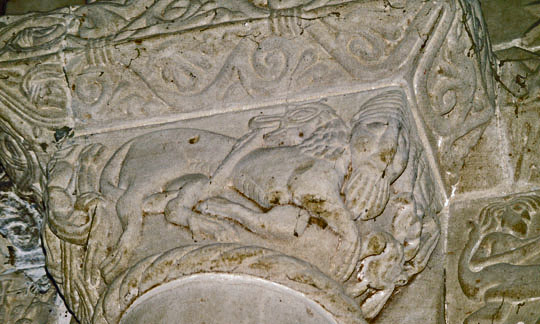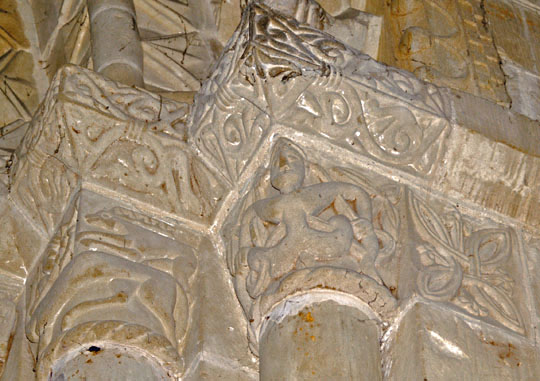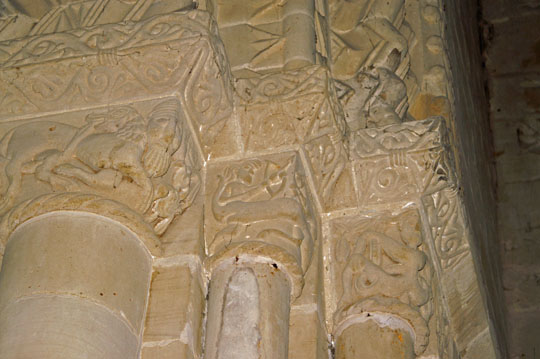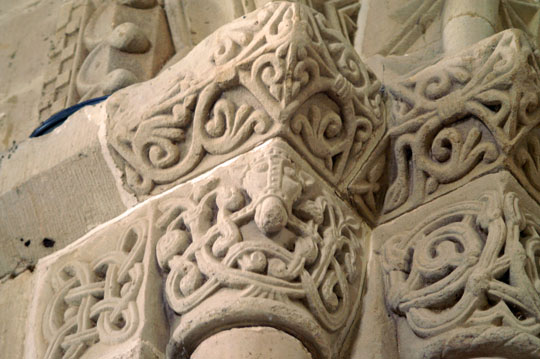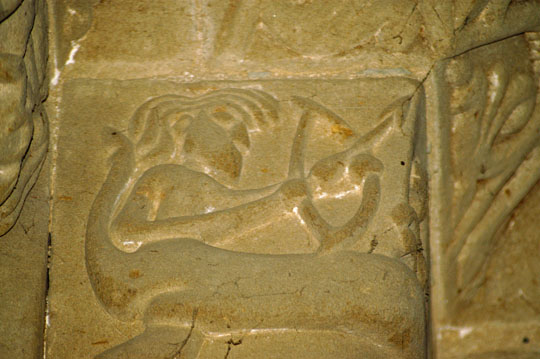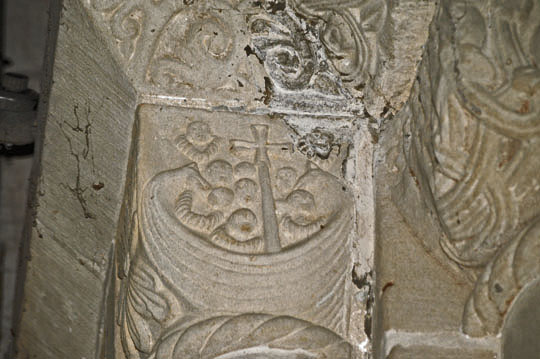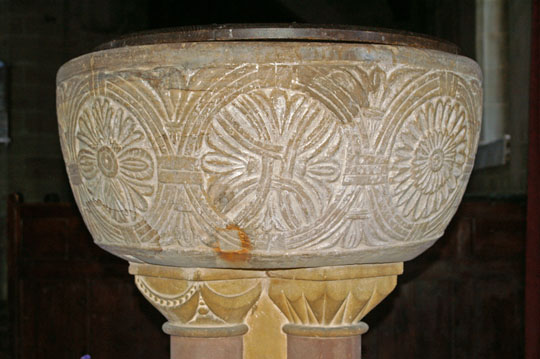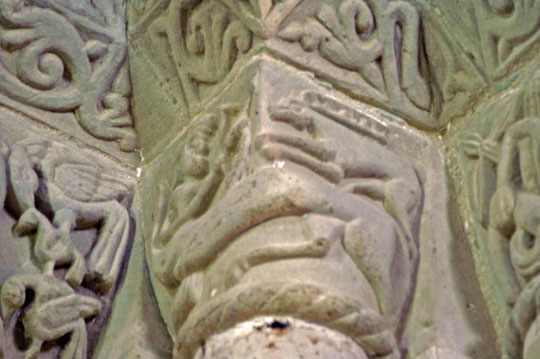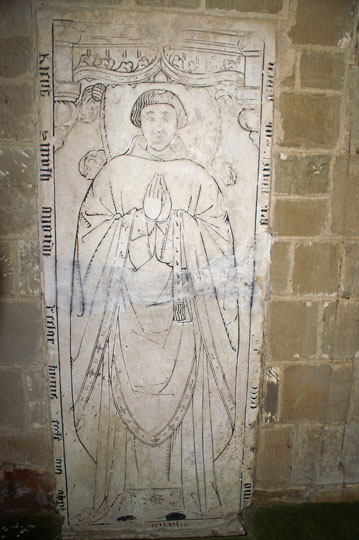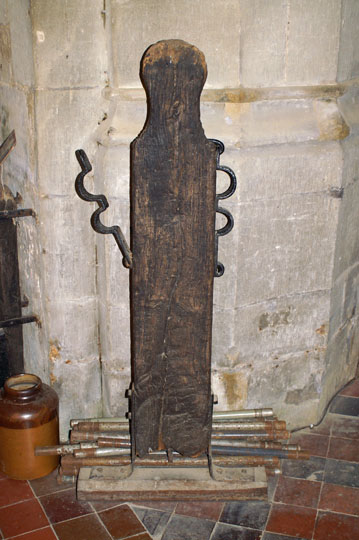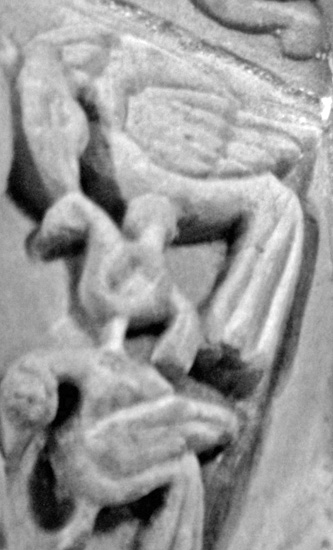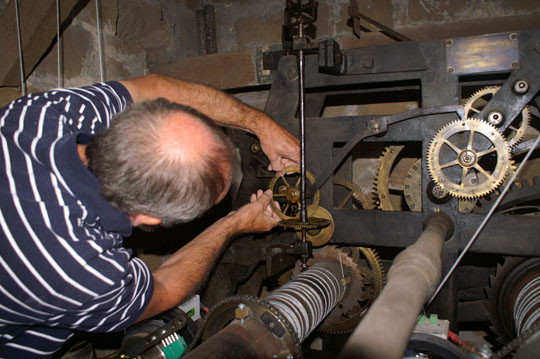|
Alphabetical List |
|
|
|
|
|
|
|
County List and Topics |
|
|
|
Please sign my Guestbook and leave feedback |
|
|
||||||||||||||||||||||
|
is very different from other fonts of the Herefordshire school found in places like Eardisley and Chaddesley Corbett which are adorned with fantastic carvings. There are some interesting furnishings: a whipping post and stocks made by a local blacksmith in around 1773 and a pre-Reformation oak “St Peter’s Pence” chest. Finally, the stone slab now mounted for use as an altar in the Lady Chapel was found under the nave during restoration and is believed to possibly be of Saxon origin. |
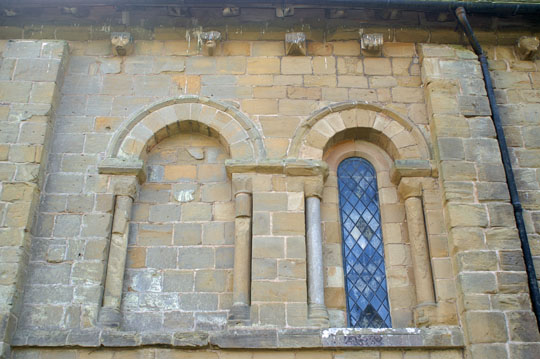 |
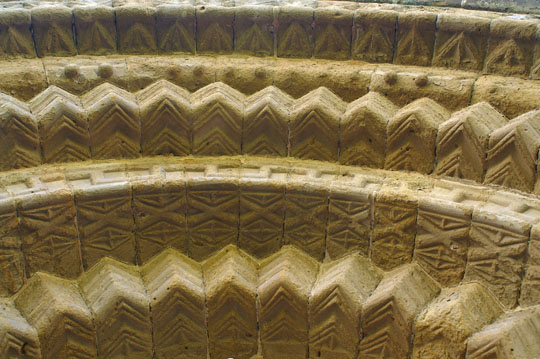 |
|
|
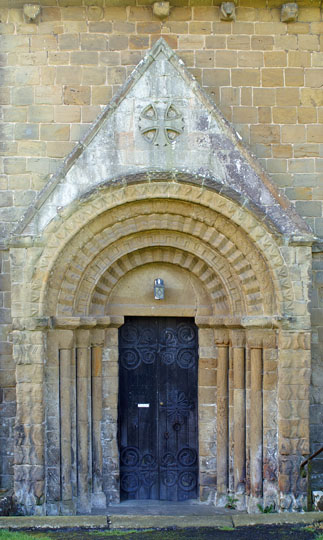 |
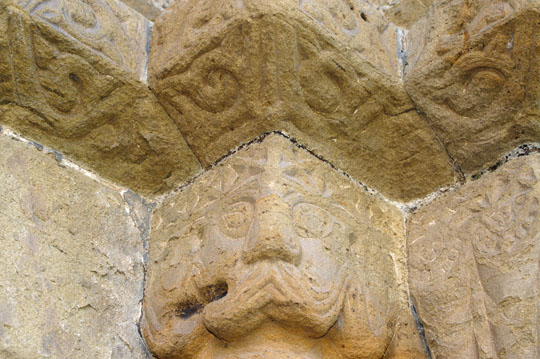 |
||
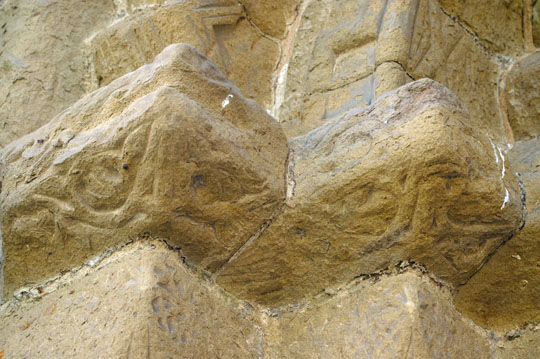 |
|||
|
The north doorway is an elaborate one. However, north doors are rarely as decorative as their south counterparts so we perhaps have reason to mourn the loss of the south door at Rock! The “mask” capital can be seen upper right, and detail of the supporting decoration lower right. |
|
|
||||||||||||||||||||||||||||||||||||||||||||||||||||||||||||
|
On the south chancel capital we have a human face sporting a magnificent goatee beard! Behind him is a lion (recognisable really only by his apology for a mane!) who looks over his shoulder and bites his own enormous tail that has curled under his body. |
|
|
||||||||||||||||||||||||||||||||||||||||||||||||||||||||||||||||||||||||
|
Between the bearded man and the contortionist can be seen a Sagittarius figure - see photo right. |
|
|
||||||||||||||||||||||||||||||||||||||||||||||||
|
|
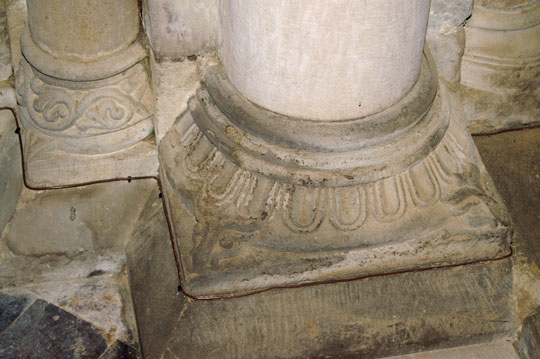 |
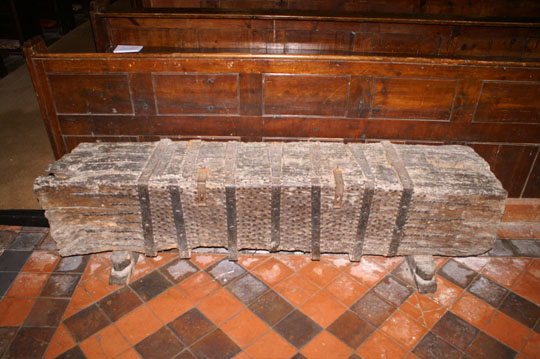 |
|
|
|
|
|
||||||||||||||||||||||||||||||||||||||||||||||||||||||||||||||||||||||||||||||||||
|
|
|
||||||||||||||||||||
|
breasts in order to feed their young with their blood, but this does not to apply here. There is a variation where the pelican revives its young by spraying it with its own blood - an obvious allegory with Christ’s sacrifice. This seems to me to be a possible explanation of this Herefordshire School imagery. |
